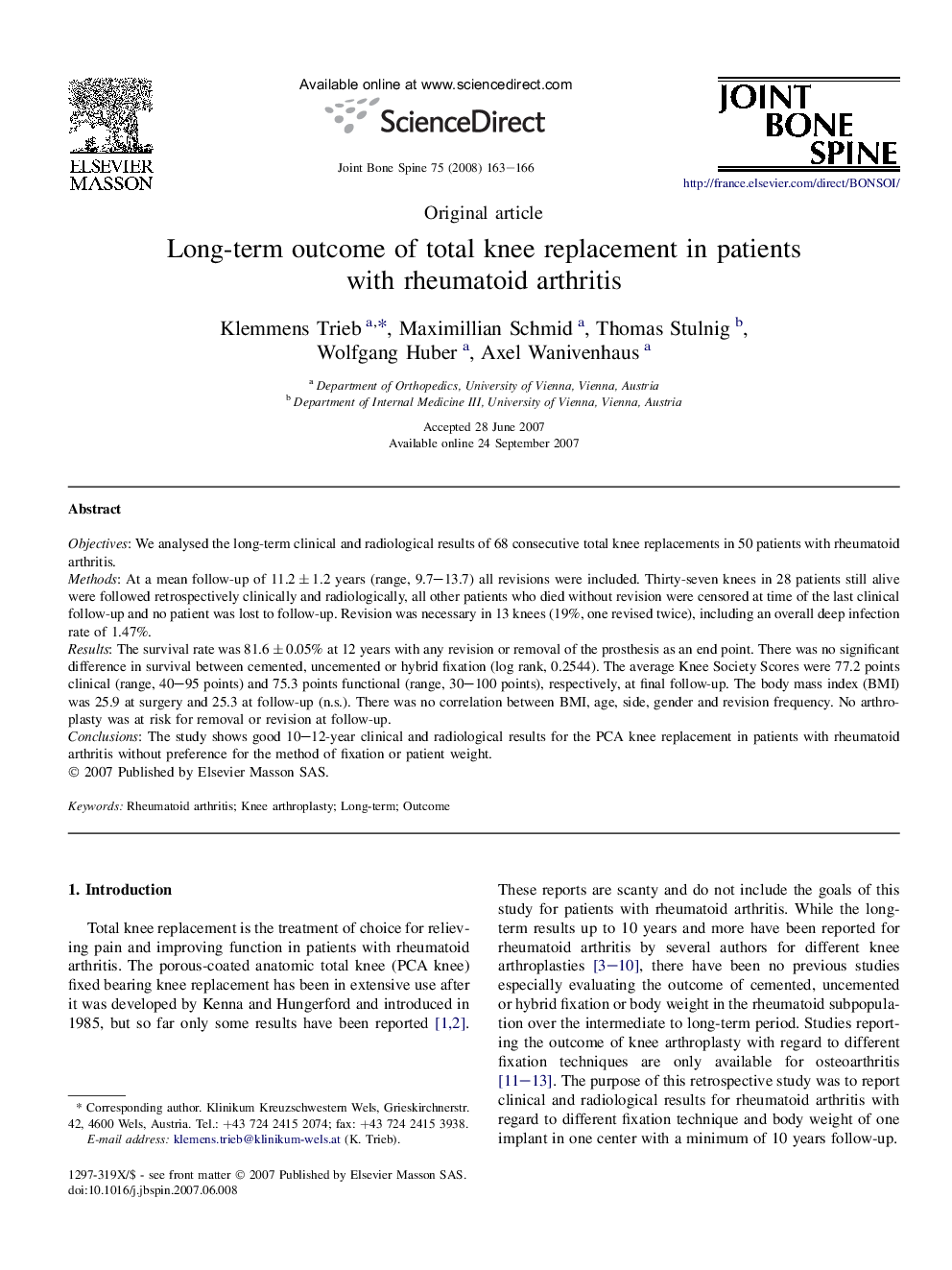| Article ID | Journal | Published Year | Pages | File Type |
|---|---|---|---|---|
| 3366901 | Joint Bone Spine | 2008 | 4 Pages |
ObjectivesWe analysed the long-term clinical and radiological results of 68 consecutive total knee replacements in 50 patients with rheumatoid arthritis.MethodsAt a mean follow-up of 11.2 ± 1.2 years (range, 9.7–13.7) all revisions were included. Thirty-seven knees in 28 patients still alive were followed retrospectively clinically and radiologically, all other patients who died without revision were censored at time of the last clinical follow-up and no patient was lost to follow-up. Revision was necessary in 13 knees (19%, one revised twice), including an overall deep infection rate of 1.47%.ResultsThe survival rate was 81.6 ± 0.05% at 12 years with any revision or removal of the prosthesis as an end point. There was no significant difference in survival between cemented, uncemented or hybrid fixation (log rank, 0.2544). The average Knee Society Scores were 77.2 points clinical (range, 40–95 points) and 75.3 points functional (range, 30–100 points), respectively, at final follow-up. The body mass index (BMI) was 25.9 at surgery and 25.3 at follow-up (n.s.). There was no correlation between BMI, age, side, gender and revision frequency. No arthroplasty was at risk for removal or revision at follow-up.ConclusionsThe study shows good 10–12-year clinical and radiological results for the PCA knee replacement in patients with rheumatoid arthritis without preference for the method of fixation or patient weight.
